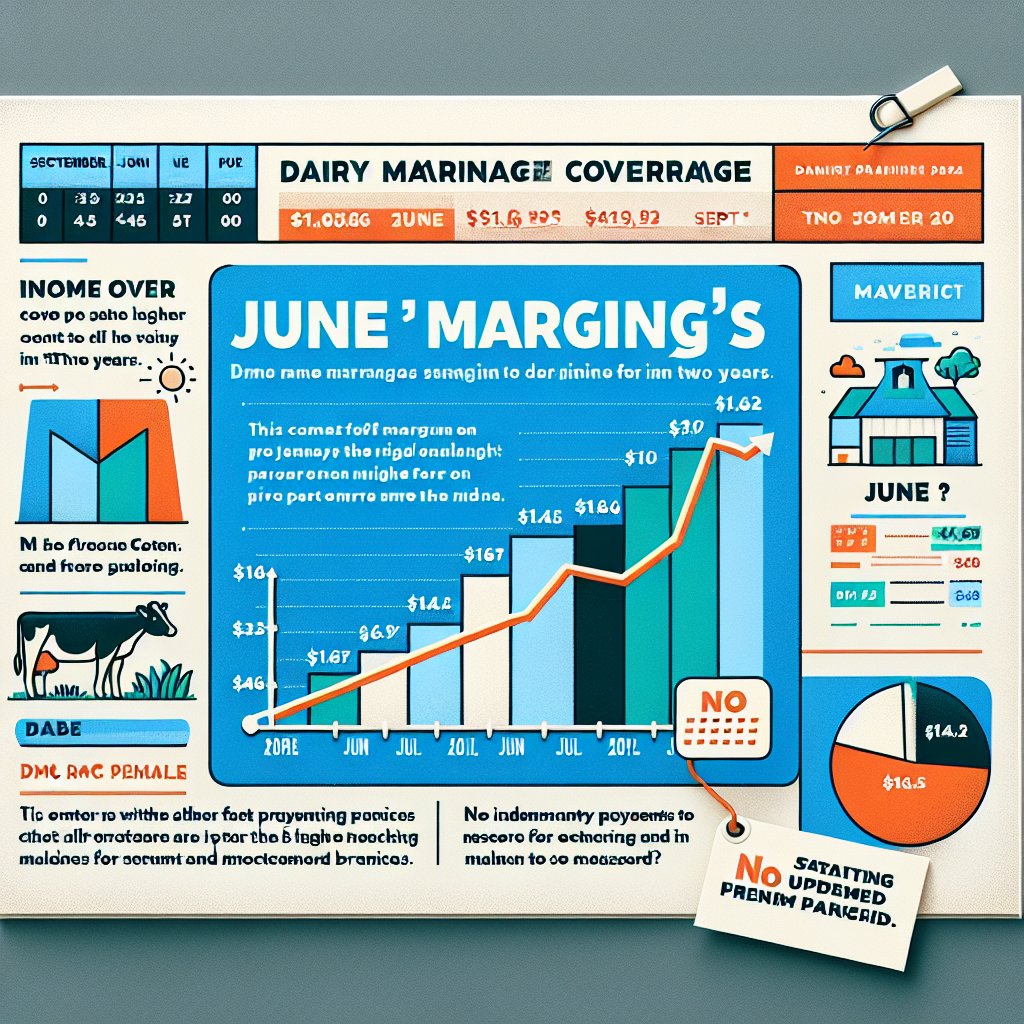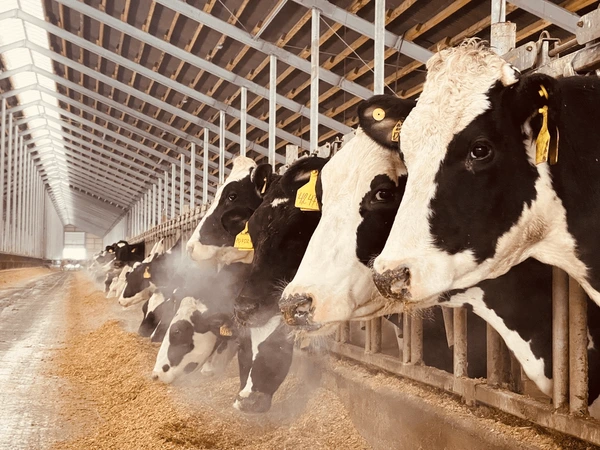Boost your dairy farm’s health with critical financial ratios. Learn how working capital, debt-to-equity, and debt-service ratios can drive growth and stability. Ready to thrive?
Summary:
Chris Crowley and Henry Lodge’s book “Younger Next Year” emphasizes the importance of good health for dairy farms, focusing on stability, strength, and agricultural elements like the working capital ratio, debt-to-equity ratio, and debt service ratio. These ratios provide a unique perspective on a farm’s economic stability, long-term sustainability, and operational efficiency. A higher percentage indicates more economic flexibility and operational resilience, which is crucial for adjusting to market changes and unexpected costs. A healthy debt-to-equity ratio demonstrates the farm’s capacity to weather financial obstacles and seize expansion opportunities. Dairy farms must closely monitor their financial health regularly, communicate with lenders, and consider selling unnecessary assets, extending loan payback periods, and negotiating for better financial conditions. Long-term profitability in dairy farming depends on maintaining resilient and adaptive operational health.
Key Takeaways:
- Stability, cardio, and strength are essential for personal and financial health.
- The working capital ratio provides flexibility, allowing better marketing decisions and versatility in purchasing capital assets.
- The debt-to-equity ratio assesses the farm’s long-term ability to withstand adversity and seize opportunities.
- The debt service ratio is crucial for determining if a farm is profitable enough to service its current debt obligations.
- Accurate and timely financial statements, prepared on an accrual basis, are necessary to evaluate dairy operations effectively.
- Continual communication with lenders and tracking financial progress is essential for maintaining financial health.
- Improving overall profitability impacts all key financial ratios positively.
- Strategic actions such as selling redundant assets and extending repayment terms can enhance financial stability.
- Regular evaluation and strategic improvements create a sustainable and prosperous dairy operation.

Imagine knowing the secret to aging gracefully while ensuring a thriving dairy farm. That is the essence of Chris Crowley and Henry Lodge’s ‘Younger Next Year,’ which emphasizes the fundamentals of good health. Personal well-being is more than individual achievements; it also reflects the resilience and performance of strenuous activities such as dairy farming. Health is essential in both worlds. The book highlights stability, cardio, strength, and crucial agricultural elements such as the working capital ratio, debt-to-equity ratio, and debt service ratio. Understanding these connections is critical for a successful dairy farm and personal vitality. Consistent financial habits increase the sustainability of your farm, just as regular physical exercises do for the body. This comprehensive strategy guarantees you and your farm are robust and flexible in adversity.
Balancing Act: The Financial Ratios Essential for Dairy Farm Health
Three financial parameters are critical when assessing a dairy farm’s viability: working capital, debt-to-equity, and debt-service ratio. Each ratio provides a distinct perspective on the farm’s economic stability, long-term sustainability, and operational efficiency.
The working capital ratio assesses short-term financial health by comparing current assets and liabilities. It evaluates liquidity and capacity to satisfy urgent commitments. A higher percentage shows more economic flexibility and operational resilience, which is critical for adjusting to market changes and unexpected costs.
The debt-to-equity ratio measures financial stability over time by comparing total external debt to equity (including retained profits and personal contributions). A lower ratio indicates a stronger balance sheet and cautious financial management, establishing the groundwork for future investments and the capacity to weather economic difficulties.
The debt service ratio is critical in determining continuous profitability and satisfying debt commitments. It divides profits before interest, taxes, and capital amortization by yearly debt payments to see if the farm earns enough money to repay its loan. A strong ratio guarantees solvency and continued operations.
Financial Flexibility at its Core: The Working Capital Ratio
The working capital ratio, computed by dividing current assets by liabilities, is critical in determining a farm’s financial agility. This ratio allows for swift marketing choices and flexible capital asset acquisitions. A robust ratio enables the farm to adapt quickly to market opportunities and difficulties, ensuring sustainable operations. A low ratio, on the other hand, increases the danger of inadequate current finances, which jeopardizes the capacity to satisfy immediate commitments and limits expansion potential. A good working capital ratio, like preserving physical flexibility in Younger Next Year, maintains your farm’s finances solid and flexible, allowing it to flourish in the face of change and adversity.
The Cornerstone of Resilience: The Debt-to-Equity Ratio
The debt-to-equity ratio is similar to Younger Next Year’s notion of strength, which focuses on developing physical and financial resilience and grit. This ratio is derived by dividing the farm’s total external debt by its equity, including cumulative earnings and personal contributions. A healthy debt-to-equity ratio demonstrates the farm’s capacity to weather financial obstacles and seize expansion opportunities, assuring long-term survival. Maintaining muscular strength is critical for overcoming physical difficulties, much as a strong debt-to-equity ratio enables a farm to manage financial challenges and exploit new opportunities successfully.
Keeping the Pulse: The Vital Role of the Debt Service Ratio
The debt service ratio determines a farm’s capacity to fulfill its debt commitments with current profits. It is determined by dividing earnings before interest, taxes, and amortization by yearly debt commitments, including principal and interest. This ratio reflects the farm’s continuous profitability and capacity to operate without financial burden. Like Younger Next Year, which emphasizes the need for continual flow to preserve health, the debt service ratio guarantees enough “blood” flows through the farm’s finances to keep it healthy. With a good ratio, a farm can avoid bankruptcy and disruption.
Ensuring Financial Well-being: The Critical Conditions for Evaluating Dairy Operation Health
Just as a healthy lifestyle requires accurate monitoring and frequent check-ups, measuring the health of your dairy business necessitates tight criteria for exact evaluation. To begin, financial statements should be prepared on an accrual basis. This technique gathers all assets and liabilities, delivering a thorough picture like a complete health check-up. Using accrual statements, identical to the proactive health management advised in “Younger Next Year,” improves foresight and financial planning for your farm.
Furthermore, the accuracy of your financial records is critical. Inaccurate data may lead to poor judgments, just as a misdiagnosis can lead to hazardous therapies. As Crowly and Lodge advocate, maintaining trustworthy financial records is analogous to maintaining a consistent workout program and lays the groundwork for long-term success.
Timeliness is the last pillar of practical assessment. Regular updates and fast reporting allow for quick evaluation of previous performance and educated, forward-thinking choices. This reflects the book’s focus on consistency and quick action in sustaining health. Being watchful and proactive guarantees that your dairy business stays solid and versatile, like a well-kept body ready to meet any challenge.
Tracking Financial Vital Signs: The Importance of Regular Monitoring
Just as “Younger Next Year” emphasizes the necessity of monitoring health, dairy farms must also examine their financial health regularly. Working capital, debt-to-equity, and debt-service ratios must be closely monitored to accomplish financial targets. Similar to health measures for personal well-being, these ratios drive your farm’s economic plans. Consistent communication with your lender reveals how ratios are calculated and helps you match your plan with what they anticipate.
Consistent, Strategic Actions: A Parallel Between Personal Health and Financial Fitness
Younger Next Year emphasizes the value of persistent efforts for personal health, and comparable tactics may enhance your financial fitness. Begin by selling unnecessary assets. Unused equipment wastes money and increases maintenance expenses. Selling these assets increases liquidity, which improves your working capital ratio and decision-making flexibility.
Another strategy is to lengthen loan payback periods to lower yearly principal payments and relieve strain on your debt service ratio. Proactively negotiate with lenders for conditions that better match your financial flow.
Increasing profitability is essential for long-term financial health. Concentrate on income sources and effectively manage labor expenses. Invest in technology to increase milk output and operational efficiency, generating considerable revenue growth. Optimize worker efficiency without sacrificing quality to achieve significant cost savings.
Younger Next Year advocates for incremental, steady improvements that result in significant advances. You secure your dairy enterprise’s long-term viability and profitability by incorporating strategic asset management, intelligent debt restructuring, and rigorous profit increases into your financial processes.
The Bottom Line
According to Chris Crowly and Henry Lodge’s book Younger Next Year, the key to long-term profitability in dairy farming is maintaining resilient and adaptive operational health. This is true when evaluating the critical financial ratios—working capital, debt-to-equity, and debt service ratios—required to sustain and develop dairy businesses.
Understanding these ratios ensures that your agriculture is resilient. The working capital ratio allows flexibility in short-term financial choices. In contrast, the debt-to-equity ratio ensures long-term stability. The debt service ratio assesses profitability and capability to satisfy commitments. Accurate, accrual-based financial accounts, timely reporting, and rigorous supervision are essential. These behaviors promote financial wellness, educated decision-making, and continual development.
Your dairy farm’s health is a constantly evolving process. Regular inspection and proactive modifications guarantee that it stays stable and responsive. Consistently striving for profitability and efficiency leaves a legacy of perseverance and success. Prioritize your farm’s financial fitness with the same diligence as your health, and create an operation that can withstand any obstacle.
Learn more:
- Boosting Dairy Farm Profits: 7 Effective Strategies to Enhance Cash Flow
- 7 Essential Questions Every Dairy Farmer Must Ask Their Nutritionist
- Maximize Your Dairy Farm’s Profit: Insights from the 2021 Nutrient Requirements Report
 Join the Revolution!
Join the Revolution!
Bullvine Daily is your essential e-zine for staying ahead in the dairy industry. With over 30,000 subscribers, we bring you the week’s top news, helping you manage tasks efficiently. Stay informed about milk production, tech adoption, and more, so you can concentrate on your dairy operations.







 Join the Revolution!
Join the Revolution!





